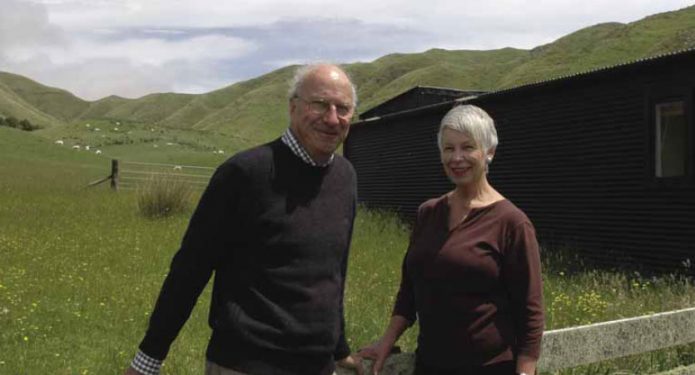You must be logged in to post a comment.
Archive

‘When I got here, I was recommended to use dicalcic by an agent of a local merchant who was a real advocate of putting phosphate on in a non-acidic manner, while applying lime in an affordable manner. Back then he told me to apply it at 4cwt onto 100 acres, which I did. Afterwards that block stood out like a postage stamp, it really was quite dramatic.
| Farm Size | 325ha |
|---|---|
| Years of dicalcic use | 40 |
| Application | No.8S (80% Dicalcic Sulphur / 20% Cropfi ne Lime) 0:3.6:0:8 @ 350kg/ha |
‘I had a highly regarded farm supervisor come see it soon after. He’d done all the land settlement in the Waikato, and much in the Wairarapa, and he told me that area was one of the most spectacular responses from fertiliser he’d ever seen. It was enough to convince me the dicalcic was sound. At that time there was a lot of moly-superphosphate being applied on farms which to me only seemed to give a boost of grass that the stock didn’t do well on.’
Over the years I’ve had all sorts of advice from experts that I should be using some other product rather than dicalcic, MAF were adamant I was wasting my time. To add to the difficulty, back then the lime content wasn’t subsidised either. I persisted with it though, based on what I was experiencing, and now, interestingly enough, some of those advisors are swearing by the product.
Professor Jim Pollock from my Massey University days had often expressed the benefits of reverted lime. He’d always said that superphosphate by itself acidifi ed the soil, that it was unsustainable, and that it lead to animal health problems. These were the things I felt confi dent dicalcic certainly didn’t do. Years later, I still do.
In this harsh environment, we’re happy running around 8su/ha. Regardless of how many times I’ve been recommended to use it, I’ve never applied DAP, and I’ve never been short in lambing time. In early December we sold 40% of our wether lambs at just under 28kg. My lambing percentage ranges between 110% and 120%, which I’m very happy with on this country.
We are farming on a shoe-string compared to many other farms. I’m astonished when I see some of the money being spent on these places, putting themselves on a treadmill where they’re locked into a work routine they can’t get off, committed to the inputs they’ve got. They are enthusiastic intelligent young farmers, and when I look back at myself when I was that age, it’s the same sort of system I got hooked into as well. But one of the things that helped me break from it was this place. To intensify the farm to maximise pasture utilisation meant I needed to sub-divide my paddocks, put in extra water supply, apply capital expenditure that required heavy maintenance… particularly being on the coast, where one of the major problems is the corrosion of our fences, and to redo the extra quantity every few years just wouldn’t have been economic. What I found though, was that I could avoid all that by applying dicalcic and watching the stock spread out in the one paddock to obtain complete pasture utilisation, without ever forcing them. That is by far a much cheaper and simpler system in my opinion.




 520 Maharakeke Rd, Waipukurau
520 Maharakeke Rd, Waipukurau

 0800 80 65 65 /
06 858 8567
0800 80 65 65 /
06 858 8567 06 8588018
06 8588018
Leave a Reply